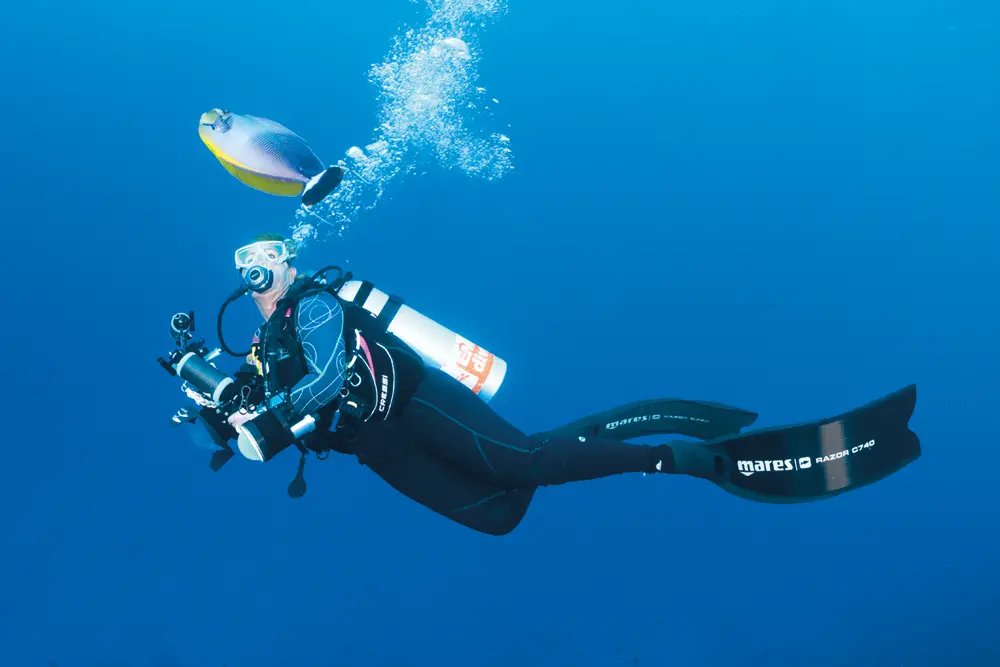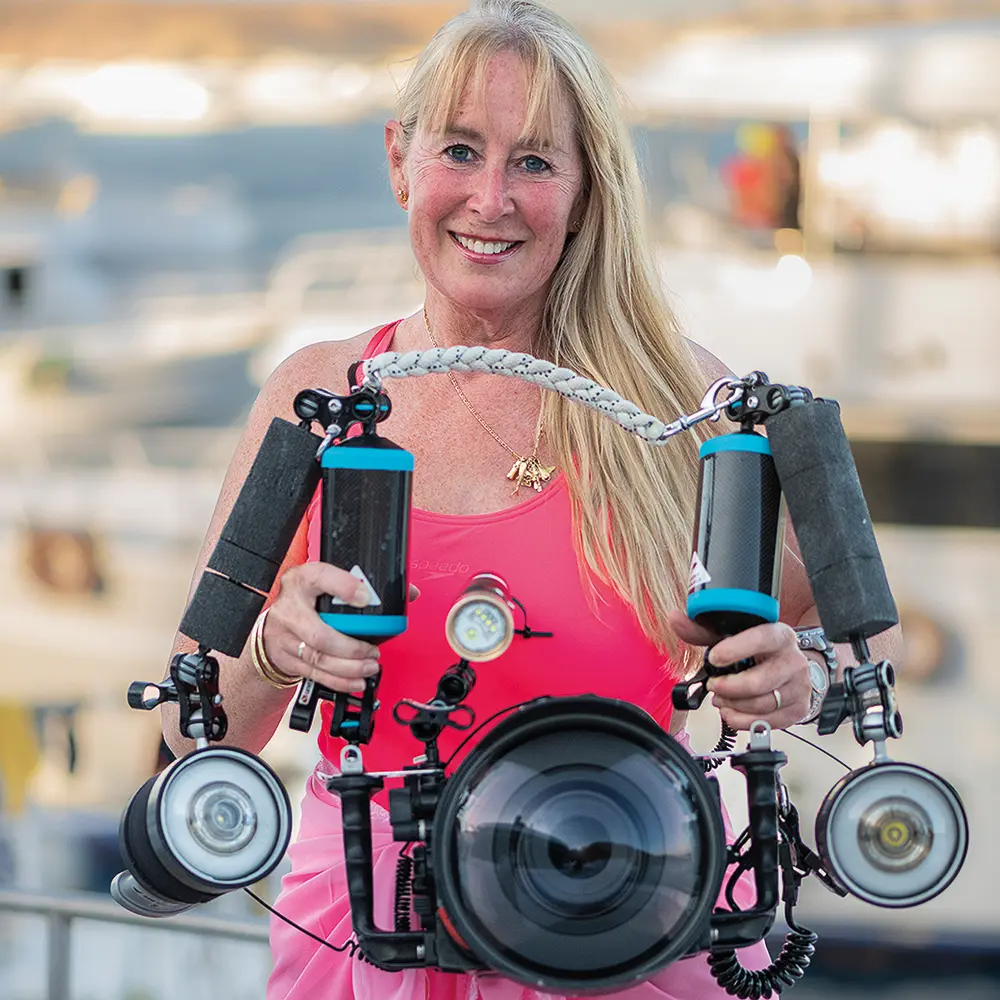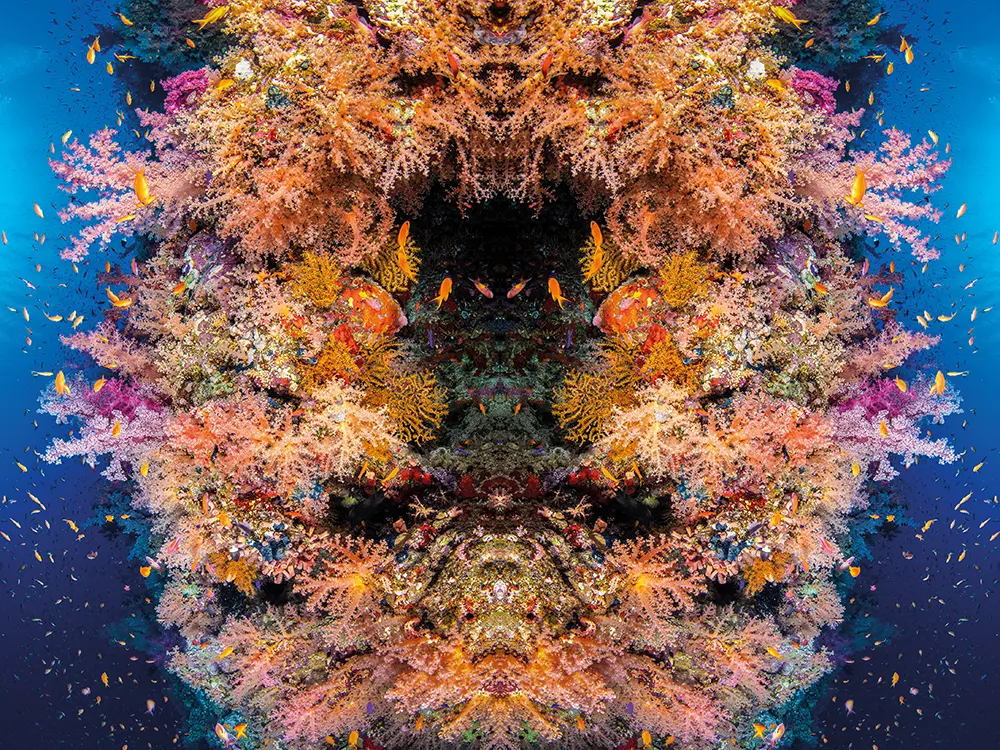
Catherine Holmes talks to DIVE’s Mark ‘Crowley’ Russell about her journey from amateur snapper to award-winning underwater photographer – and being bitten by a giant American crocodile!
Catherine Holmes, originally from Australia and now a dental surgeon resident in England, is a multi-award-winning photographer.
Among her outstanding achievements is being the first woman to win the GDT European Wildlife Photographer of the Year Underwater Category in 2023.
Her photograph of a tarpon hunting amid a school of silversides was also voted DIVE’s best Big Shot of 2024.

Where did it all begin and how did you make the transition from enthusiast to serious underwater photographer?
I started diving when I was about 17 in Australia and for many years used one of the little Sony waterproof cameras (a Cybershot with the now famous Marine pack), and then I went onto the Sea&Sea Motormarine 1 (the yellow box once virtually ubiquitous in dive shops), which I flooded loads of times.
But really it was just a hobby on a week or two a year. I’d manage to get away for a week and come back with rolls and rolls of film and hardly anything would come out.
I’ve always been interested in composition and painting – I’ve painted all my life – and my photographs were getting better but I was frustrated. I’d go to dive shows and hear Alex Mustard talk and think: I want to take pictures like that.

I kept hearing that if you want to improve your photography, you need to get away on photo trips with other photographers, because divers and photographers don’t always mix – we just spend too long taking pictures – and doing that changed my outlook.
I took advice from lots of people and started with an Olympus EM-5 Micro Four Thirds mirrorless camera in 2016, then I progressed to an EM1 MkII [on which the pink and yellow goby shot towards the end of this article was taken], but eventually my friend Nick Moore got frustrated with me and said, ‘Take my Nikon D500; get an SLR!’ So, I took his D500 away for a week, and when I came back I went and bought one!
I’m feeling some pressure from other photographers with their newer cameras but I’m sticking with the D500 for now because it’s working for me – what you see and how you see it is far more important to the photograph than the kit.

What do you enjoy most about being an underwater photographer and do you have a favourite style?
I’m passionate about just being underwater and being with the fish, so just being there is incredible.
Creating the image is all about getting the feel of the place, finding something that’s inspiring, and then working out how to take the picture – waiting for ages, getting the creatures comfortable with you and at the same time thinking: where’s my light coming from? What have I got to frame this to make it look an attractive picture?
It’s exactly the same as painting because when you paint, you’re looking for a subject; you’ve got nice light, you’ve got nice colour, and so my photographs are generally very painterly.

Henley [award-winning photographer Henley Spiers] thinks my images have too much colour, but you look at different photographers’ pictures and see everybody’s got a very personal style – some are more focused on macro; others are interested in more technical stuff, but I think mine is very much colourist.
When it comes to macro or wide-angle, I can’t say I love one more than the other, because they’re both fabulous. I have really enjoyed trying new techniques like bokeh and shallow depth of field, and I really like reverse lenses and the effects you can get with that – I spent a lot of time in Indonesia last year doing reverse lenses and stuff, trying out new techniques for more interesting backgrounds.

Where are your favourite places to dive and do you have any special underwater memories?
Raja Ampat is really amazing and so is the Red Sea – the colour is incredible – and I went to Mexico to dive with the sea lions and I was just in heaven.
I could barely compose a picture because I was so excited, because they’re just so amazing, these beautiful creatures.
But my most memorable photograph was snorkelling with the crocodile [see the previous page] when I actually got bitten, which has become folklore within the underwater photography community. I was so shocked I didn’t even really realise!

Fortunately, I survived, I’ve just got three big teeth marks on either side of my thigh. That was a bit exciting, but the picture looks great in my surgery waiting room. People love it, and there’s a good story to tell.
What advice would you give to beginners looking to follow in your footsteps?
Firstly, you have to be really, really comfortable in the water with good buoyancy control to stay where you want without impacting the reef or the ambience of the fish. If you really love it then it becomes quite easy, but good diving is super important before the photography.
Get into the community. Go and join something like BSoUP (British Society of Underwater Photographers) – and read a lot. Alex Mustard and Martin Edge’s books are both bibles for someone who wants to learn about how to compose and work their cameras.

Go on dedicated photo trips if you can, just to be with other photographers, because photographers are actually very keen to share knowledge – the BSoUP monthly meetings have breakout rooms for beginners to chat with other photographers, and really good lectures.
Learn from a teacher for a while, or even just one trip with a camera pro, because you will have a problem, and you won’t know why, and they will point out you’ve got it on the wrong setting.
You can often be stopped at the first hurdle by something small, so it’s really helpful to be with other people that are knowledgeable, not just other photographers.

The most important thing with underwater photography is getting the light right, so learning where to position your strobes is paramount, and another photographer will see immediately if they’re in the wrong place.
You can take great pictures with natural light, so start simple in shallow water, snorkelling with a camera.
The most important thing is just to be passionate and keep trying and to be open to sharing, because we’ve got a really great community.
While on the surface it can look quite competitive, actually everybody wants people to get the best and see the best and share the best, because we all want to protect what we’re seeing.
To see more of Cathy’s fantastic pictures visit her website at catherineholmesunderwaterphotography.com or find her on Instagram @catherineholmes.photography
More great reads from our magazine
- Artificial Intelligence – good or bad for underwater photography?
- Liveaboard safety – how divers can change it and when to walk away
- Luxury resort versus budget homestay in Raja Ampat
- DIVE’s Big Shot Portraits – THE WINNERS!
- The National Lobster Hatchery – giving lobsters a helping hand
- Conception liveaboard fire captain appeals manslaughter verdict - 5 December 2025
- New global dive-travel platform Scubago set to launch in 2026 - 3 December 2025
- DIVE’s Biggest Shots of 2025 - 1 December 2025



